Seville is as Spanish as it gets! The vivacious capital of Andalusia (a region in southern Spain) is everything you imagine when you picture Spain—well, minus the beaches. Strolling its streets is a veritable feast for the senses. You’ll hear passion-infused flamenco from street performers, see breathtaking Moorish architecture, bask in sun-drenched plazas, relax with a tinto de verano on the banks of the Guadalquivir River, savor deliciously authentic tapas in bustling food markets, and meet people every bit as warm—not to mention as hot—as the baking Spanish sun itself. The freedom-loving and life-embracing spirit of Seville lends itself to a progressive attitude, making it an ideal destination for LGBTQ+ travelers looking to explore Spain beyond the obvious gay meccas of Barcelona and Madrid.
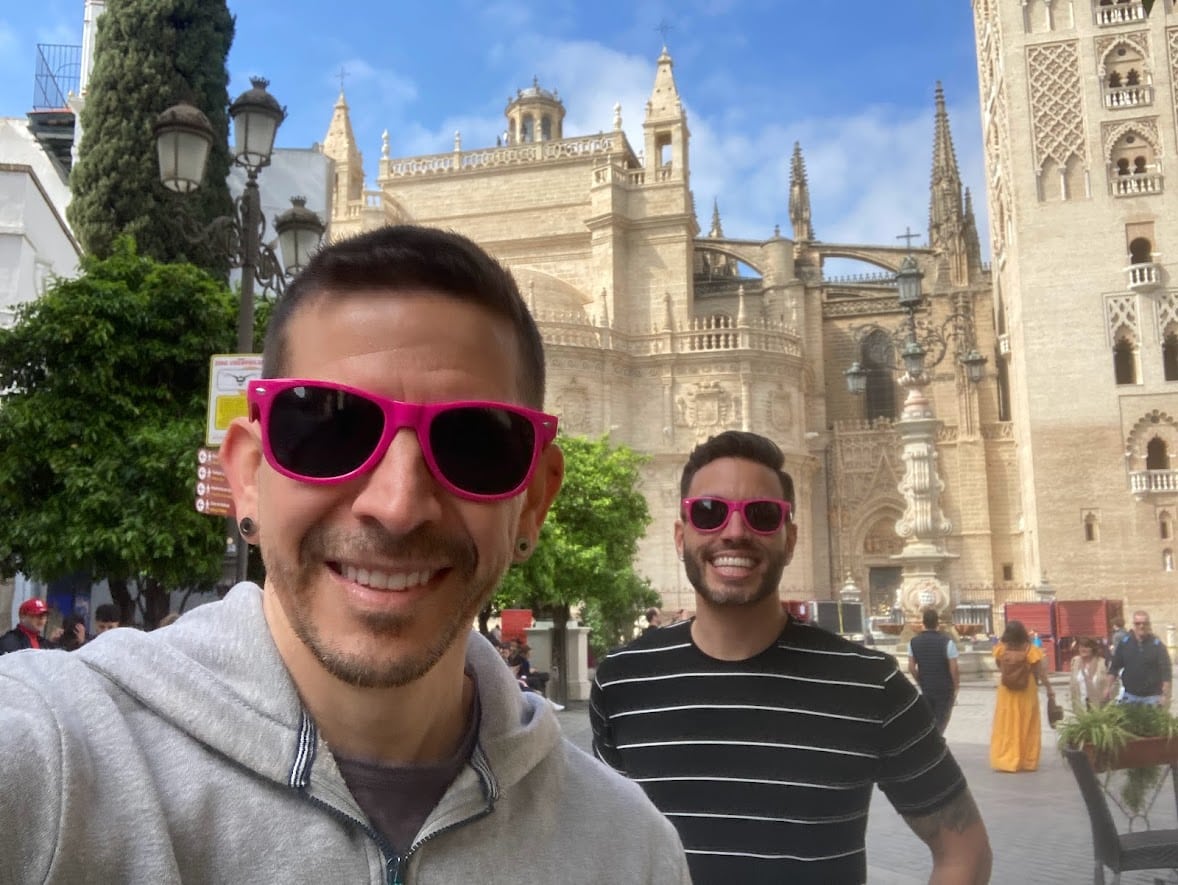
In fact, Seville has a lot to offer travelers in general, despite often being overlooked in favor of its coastal neighbors, Málaga and Torremolinos. From memorable sights like the Moorish Alcázar palace and the Gothic Seville Cathedral to its spirited nightlife in Alameda de Hércules and fiery flamenco shows in its intimate bars, Seville offers a blend of Spanish tradition and Mediterranean modernity that is sure to satisfy anyone looking for a taste of authentic Spain.
Table of Contents
1. General Tips
2. Transportation & Airport Transfers
3. Gay Hotels in Seville
4. Sightseeing and Activities in Seville
5. Gay Tours in Seville
6. Restaurants and Cafes
7. Seville Gay Bars and Clubs
8. Gay Saunas & Cruising Bars
9. Gay Events in Seville
10. Day Trips from Seville
General Advice
The best time to visit Seville is during spring (March to May) and autumn (September to November), when the weather is usually pleasantly warm and sunny. April, in particular, is a good month to visit because the city really comes alive with festivals, including the famous Feria de Abril. During this time, there’s also the perfect blend of warm temperatures and fewer crowds, allowing for a more enjoyable exploration of the city's historical sites and vibrant neighborhoods. In the summer months, Seville is the hottest city in Spain, so if you choose to visit then, be prepared for the sweltering heat—it really is quite something! Between 2 p.m. and 5 p.m. is siesta time in Spain, when many places close for a few hours. During the summer months, you’ll truly understand this tradition, as being out on the streets during this time exposes you to the worst of the heat.
Seville Pride is worth braving the heat for and takes place in June. The city becomes a cavalcade of joyous celebrations, including a massive parade across the city. Just be sure to take it easy with drinking during the day, and, in addition to a beer or tinto in one hand, be sure to have a bottle of water in the other.
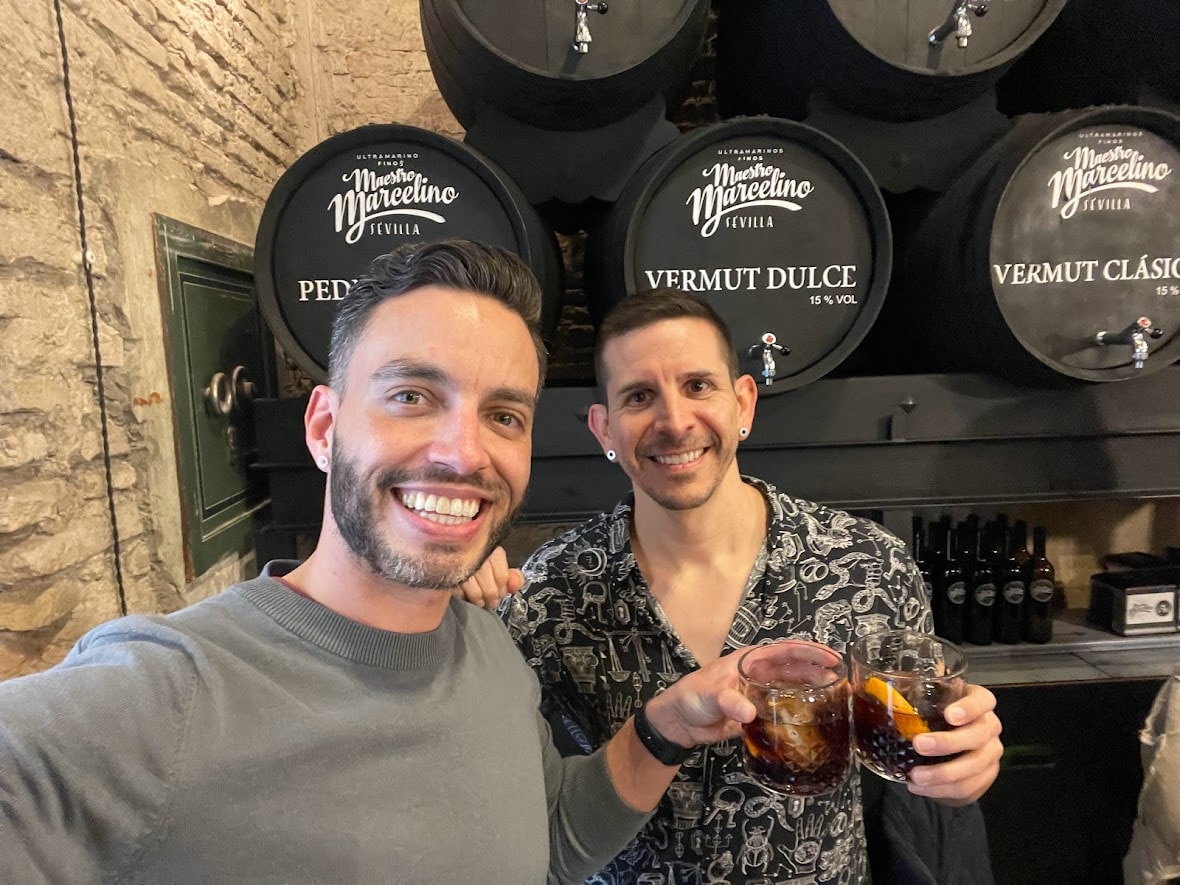
Transportation & Airport Transfer
Seville is easily accessible via several airports in the region. The closest is Seville Airport (also known as San Pablo Airport), which is only 10 kilometers from the city center. Several buses go to and from the airport, but the easiest to find is the EA (Especial Aeropuerto) bus, which operates every 15–30 minutes, costs €4 (or €6 round trip), and takes around 35 minutes each way. The bus also stops at key locations in the city, including Santa Justa train station and Plaza de Armas bus station. The latter is the best stop for those staying within Seville because the Santa Justa train station is about an hour’s walk outside the center. Málaga and Jerez airports are other nearby options, but reaching Seville from either requires train journeys of around two to three hours on Renfe to Seville’s Santa Justa train station.
Seville’s city center isn’t actually that large, with all the main neighborhoods and sites within pleasant walking distance of each other. Walking is really the best way to enjoy the city and absorb Seville’s palpable atmosphere—if you can handle the heat, depending on when you visit. That said, the public transportation system is straightforward, featuring buses, trams, and a metro line.
There is a single metro line with 22 stops, reaching as far as the city outskirts, and tickets cost only €1.35 for a single trip. However, the tram is a better way to get around in the center and connects all the main areas between Plaza Nueva and Avenida de la Constitución (near the cathedral). Tickets cost €1.40 per trip and can be bought onboard. There are many buses, but they can feel complicated for those who don’t speak Spanish or know the city well. The C1, C2, C3, and C4 buses run in, through, and around the center, and tickets are available from the driver (starting at €1.30) or at kiosks. Public transportation operates from early morning until 11 p.m. during the week and as late as 2 a.m. on weekends, allowing for late-night shenanigans.
Gay Hotels in Seville
Luxury
Only You Seville – This gorgeous 5-star hotel blends classic Southern Spanish style with a modern, homely touch. The rooms are beautifully furnished in the same style as the rest of the hotel, with spacious balconies and incredibly comfortable beds! Located near the Santa Justa train station and a short walk from the center, the hotel also has its own exquisite Andalusian-style restaurant, Trotamundos. Their buffet breakfast is on another level, featuring a live station where your favorite breakfast dishes are made right in front of you. There’s a gym, a trendy bar, and a sophisticated pool area at the back, offering a great place to unwind as the sun sets over Seville.
Sacristia de Santa Ana – This beautifully ornate boutique hotel is located in Alameda de Hércules, the area home to most of Seville’s gay-friendly bars. The building is an 18th-century mansion whose traditional decor contrasts with the vibrant bars just outside. The air-conditioned rooms have parquet floors and classical-style décor that matches the rest of the mansion. Each room has a work desk and a private bathroom. A restaurant downstairs serves continental food, including a full English/Irish breakfast.
Mid-Range
Hotel Inglaterra – How about blending a little English sophistication into your Spanish experience with this elegant 4-star hotel? Located just a few feet from the Seville Cathedral, the hotel has an English theme reflected in its classic-style decor. The spacious air-conditioned rooms have wooden floors, marble bathrooms, and private balconies. The highlight of the hotel is its rooftop terrace with a stylish bar overlooking Plaza Nueva, offering impressive views of the Seville skyline. Hotel Inglaterra also provides a generous breakfast buffet and has its own restaurant serving Mediterranean cuisine.
Hotel Doña Lola –Offering all the comfort of an apartment with the services of a hotel, this 2-star hotel is located just south of Alameda de Hércules, in the heart of Seville. The rainbow flag hanging from the balcony identifies it as openly gay-friendly, but it’s a hotel where everyone is welcome. There’s also a sociable, clothing-optional solarium terrace with a cute pool on the roof. The rooms, each with a different color theme and have a clean, crisp feel. Hotel Doña Lola is also pet-friendly.
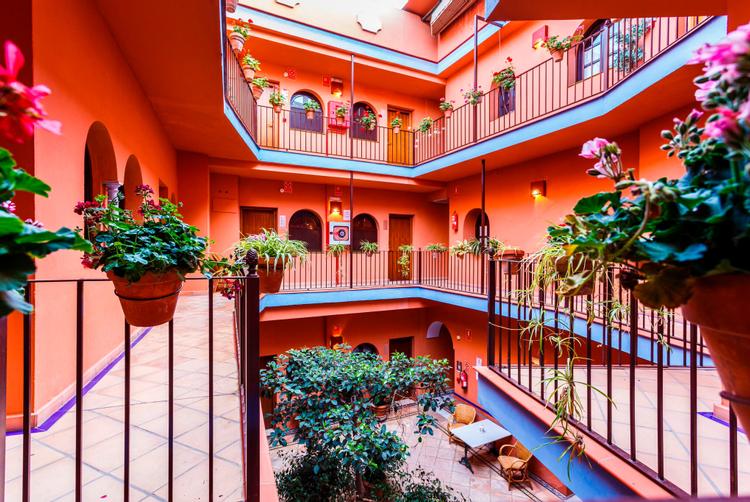
Patio de la Alameda –In Andalucía, a lot of pride is put into patios, and this hotel’s patio feels like that of an authentic Spanish home. Once a 19th-century palace, it has now been converted into a charming hotel. All the rooms open onto balconies encircling three grand Andalusian patio courtyards, full of flowers and comfy seating to unwind on. The hotel is conveniently located right in the central Plaza of Alameda de Hércules, near all the best gay-friendly bars and restaurants. The rooms are modern and stylish, with prices starting at about €70 for a standard room.
Budget
Banana Gay House –Situated in the center of Seville, just south of the gay area, this cozy men-only, clothing-optional guest house has a large terrace, shared lounge, and kitchen that nurture a sociable atmosphere. In other words, it’s a great place to meet other guys visiting the city. The rooms are simple but cozy, and some come with fully-equipped kitchens.
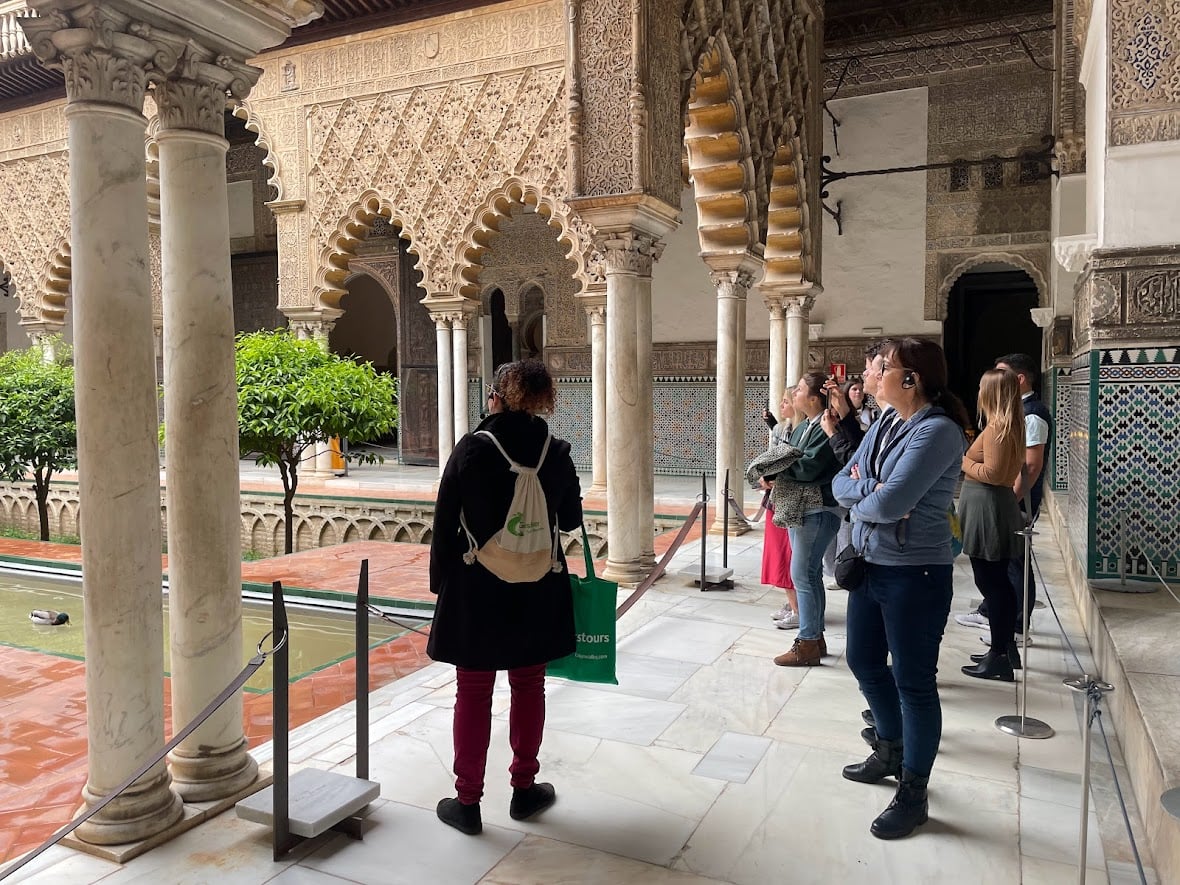
Sightseeing and Activities in Seville
Real Alcazar de Sevilla – Seville has three UNESCO World Heritage sites, all within the gorgeous old town/Jewish quarter. Perhaps the most iconic of these is the Alcázar. Originally a Moorish fort, it now serves as a residence for the Spanish royal family when they visit Seville and is instantly recognizable to anyone who has seen Game of Thrones as the palace in Dorne. Over the centuries, it has been expanded and renovated, blending Islamic, Gothic, Renaissance, and Baroque styles. The palace complex includes beautiful gardens, intricate tilework, and ornate courtyards to explore. Avoid the crowds, you can take a tour with Walks, which provides VIP morning access, allowing you to traverse the palace with just your group. Book tour →
Cathedral of Saint Mary’s (Seville Cathedral) – Built on the site of a former mosque, this impressive 16th-century cathedral houses the tomb of Christopher Columbus (allegedly), an ornate Gothic altarpiece, and the iconic Giralda bell tower, originally a minaret, offering an amazing view over the old town and city. Its grandeur and historical significance make it a central attraction in Seville.Book tour →
Triana – A vibrant neighborhood in Seville, Triana is easily accessible via the Isabel II Bridge from the city center. Located along the scenic River Guadalquivir, Triana is renowned for its lively bar and restaurant scene, historic ceramics, and flamenco heritage. Stroll through its charming streets, visit the bustling Mercado de Triana, and relax on the riverbank to watch the canoes glide by. Triana boasts some of the city’s best restaurants, offering delicious tapas and traditional Andalusian cuisine. Book tour →
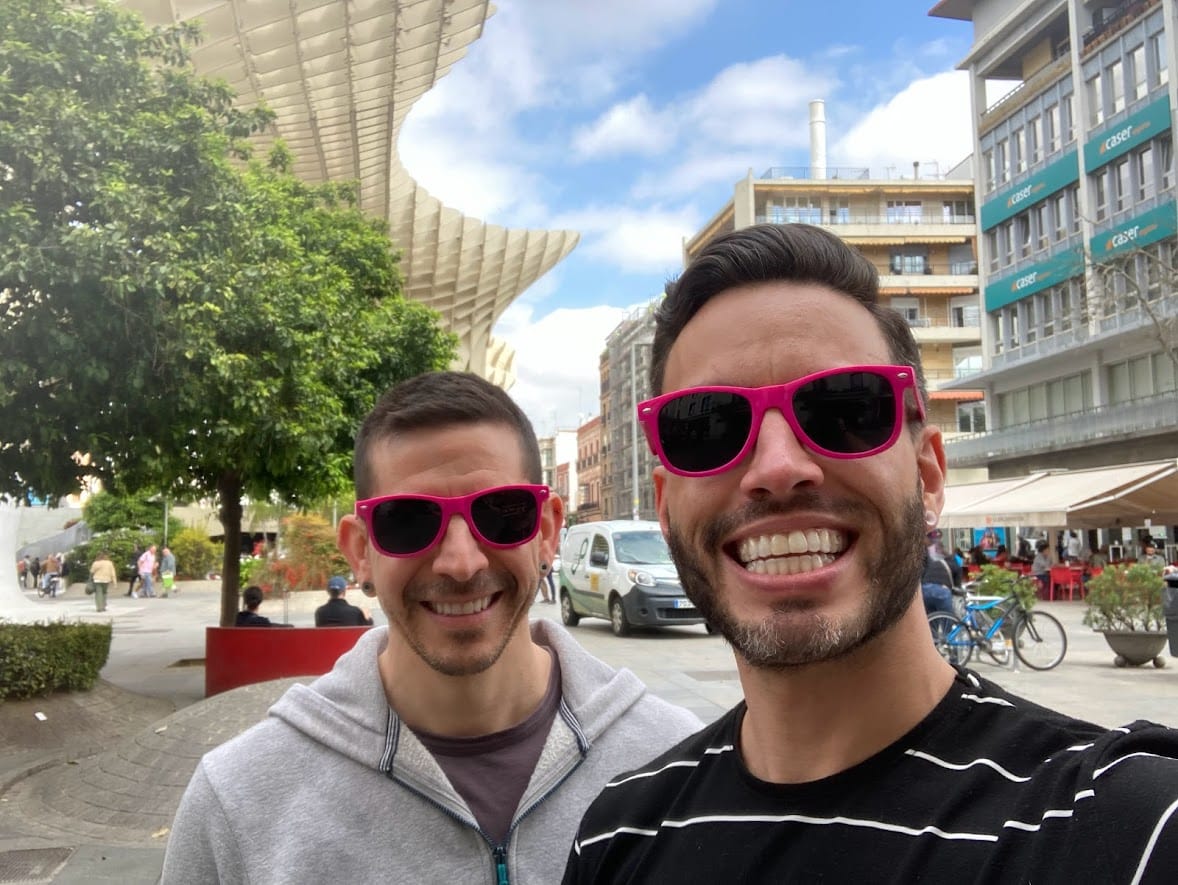
Las Setas de Sevilla – A more modern monument can be found in Seville's Plaza de la Encarnación in the form of Las Setas de Sevilla (Mushrooms of Seville), also known as the Metropol Parasol. This striking wooden structure was designed by Jürgen Mayer and features six mushroom-shaped parasols, providing shade and stunning architectural interest. Explore the archaeological museum at its base, enjoy panoramic city views from the rooftop walkway, and relax at the terrace café.
Museum of Fine Arts Seville – Housed in a former convent, this museum showcases an extensive collection of Spanish art from the medieval period to the 20th century. Renowned for its impressive works by Murillo, Zurbarán, and Velázquez, the museum offers a deep dive into the rich artistic heritage of Andalusia.
Plaza de Toros de la Real Maestranza de Caballería de Sevilla (Maestranza Bullring) – Whatever your thoughts on the cruelty of bullfighting, it is impossible to deny its place in Spanish culture. The Maestranza Bullring is one of Spain's oldest and most prestigious bullrings, and an iconic landmark. Even today, it hosts traditional bullfights and cultural events, but if none of that appeals to you, it still houses a museum showcasing the history and art of bullfighting.
Seville Tapas and Flamenco Tour – You simply can’t come to Seville without seeing a flamenco show—it would be a cultural crime! However, there are lots of tourist trap shows for that very reason. Devour Tours combines a tapas tour with seats at an authentic flamenco show in the Jewish Quarter—no dramatic lights, just pure, passionate flamenco at its finest. Book tour →
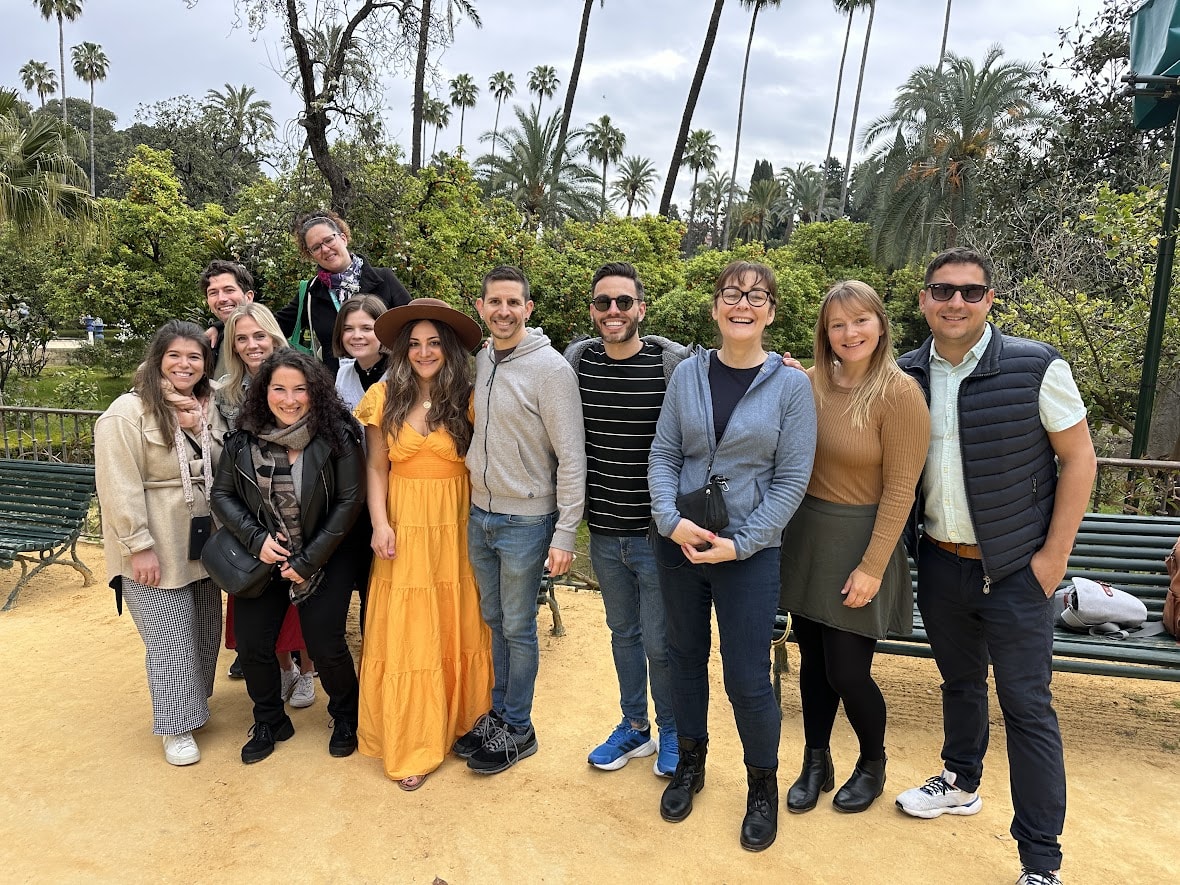
Parque de Maria Luisa – Seville's green, oasis-like park in the center of the city offers a tranquil escape while showcasing the city's natural and architectural beauty. Gifted to Seville in 1893, it boasts beautifully landscaped gardens, serene ponds, and charming pavilions. Wander through shaded pathways, admire vibrant flower beds, and discover the stunning Plaza de España, a masterpiece of Renaissance Revival architecture. You can even take a romantic boat ride on the semi-circular pond that encircles the plaza.
Isla Magica – Release your inner child at this popular theme park in Seville. A departure from the flamenco and street life of the city, the park offers roller coasters, water rides, entertaining shows, and interactive attractions themed around Spain's Age of Exploration. It’s located on Cartuja Island, along the River Guadalquivir. Book tour →
Gay Tours in Seville
Gaily Tours – This company, which specializes in LGBTQ+ tours, offers a general historic tour of the city, a “Luis Cernuda’s Secrets” tour (exploring the city in the footsteps of the famous gay poet), and a Seville by Night tour. Book tour →
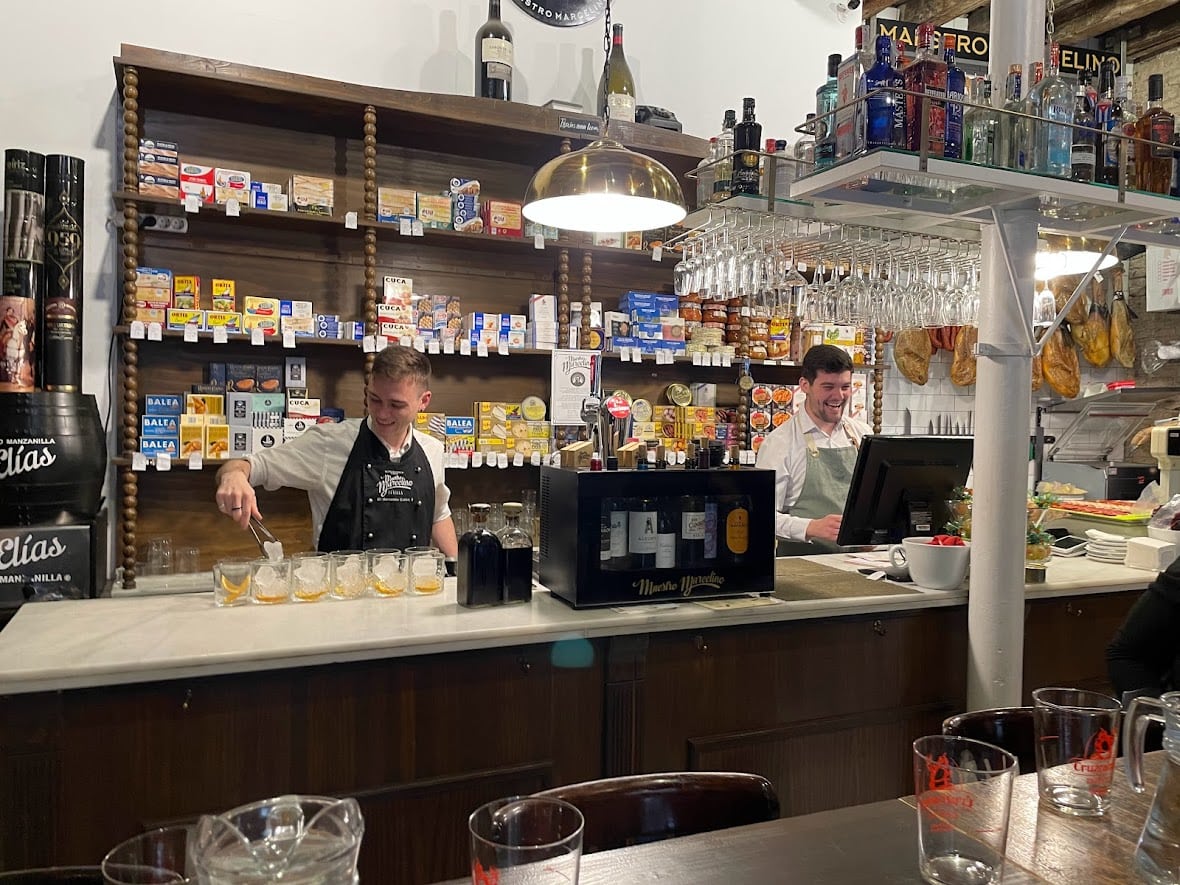
Restaurants and Café
Flamingo Café Bar – Just off Plaza Alameda de Hércules is this cute gay-friendly café with a large terrace. During the day, it's a great spot for coffee, cheesecake, maybe some bravas, and soaking in the area’s vibes. It’s also a popular gathering place for the LGBTQ+ community in Seville, especially at night from Thursday to Sunday, when it transforms more into a bar.
Mentiroso Cafe Bar – Also located just off Plaza Alameda de Hércules, this trendy spot is popular with the local LGBTQ+ crowd. It serves as a café by day and a bar by night.
Al Aljibe – A chic restaurant in Alameda de Hércules that offers all the traditional tapas—like bravas and croquetas—done right, along with more creative tapas options. All their meat and seafood dishes are sourced from the Seville area, and all their wines are Andalusian. A large terrace that incorporates the energy of the neighborhood adds to the dining experience.
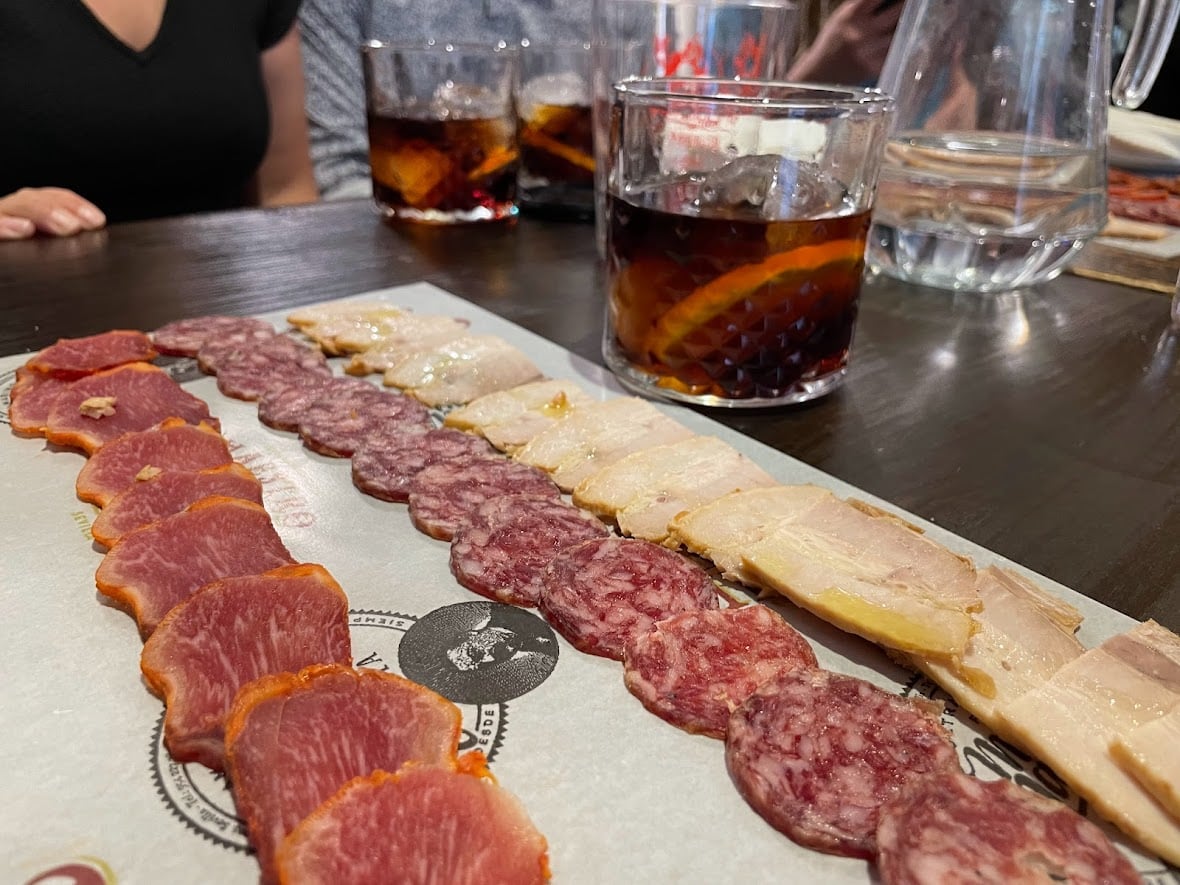
Mamarracha – This trendy tapas bar, located right in front of the cathedral, has an urban theme with sleek wooden furniture, concrete walls, and a hipster-like vertical garden. The menu offers a varied selection of tapas, but the restaurant’s specialty is grilled meat—and it's grilled to perfection.
El Rinconcillo – If it's pure traditional Andalusian food you want, then you don't get more authentic than this 17th-century rustic tavern. El Rinconcillo is the oldest bar in Seville and one of the most popular of its kind in the city. Located in the center, its menu is made up of delicious meat dishes and offers an extensive wine list to wash it all down with.
El Sella – The Triana neighborhood, across the river from the center, is home to some of the best restaurants in Seville, and El Sella is one of them. Although technically many of the dishes are from the northern region of Asturias rather than Andalucía, the food is still top-notch Spanish cuisine. The menu is exquisite, with some of the best tapas in the city. Highlights include scallops and pork cheeks in dark chocolate, cochinillo (suckling pig), and an unbelievable paella.
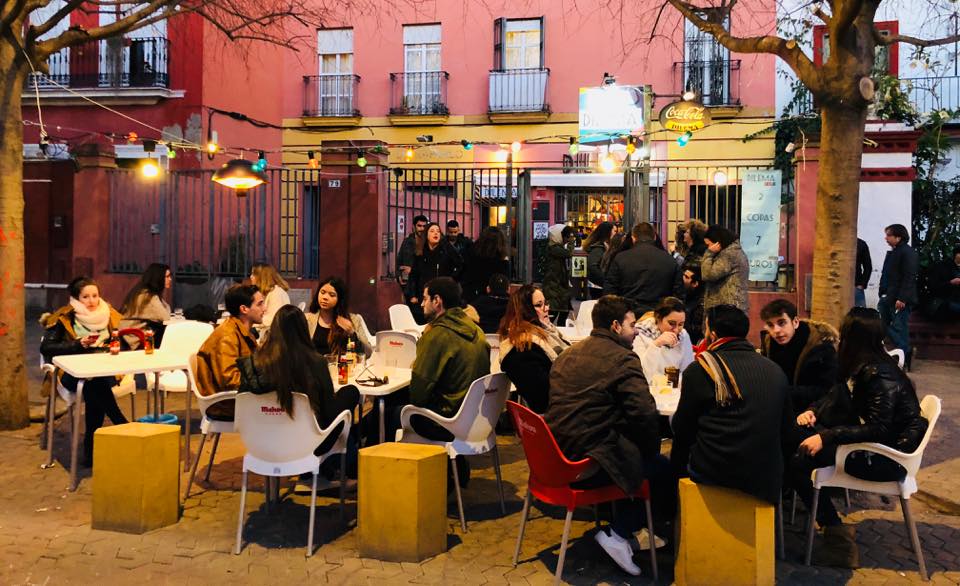
Seville Gay Bars and Clubs
Pride B4R – Formerly known as Men to Men, this gay bar is located at the southern end of Alameda de Hércules, where the majority of Seville’s gay bars are found. Unlike many others, this one is indoors with no terrace and is especially popular with men over forty. It’s small and fills up on the weekends, but there’s a fun dance floor and sassy Spanish drag queen shows. There’s an entrance fee on Saturdays, but it comes with a free drink, which—being in Spain—is quite generous in size.
Dilema – A gay bar along the Alameda de Hércules strip, proudly displaying its rainbow flags in front of its lively terrace. The atmosphere is welcoming, the people are nice, and the décor is interesting (with flags from around the world scattered across the roof alongside the rainbow flag, and quirky artwork on the walls). Most importantly, the drinks are cheap!
1987 – This jazzy-looking bar is also part of the gay bars on the Alameda de Hércules strip and is a great place to sit on a terrace and soak in the area’s atmosphere. It’s a mixed crowd, but it’s one of the favorite terraces for gay locals as it opens out to the central plaza. Inside, you’ll find 80s music playing, a small dance floor, and memorabilia decorating the bright walls.

Alameda Ritual Club – A bar just up from the actual Hercules pillars that stands out due to being housed in a white renovated mansion lit up by purple lights at night. It’s a mixed bar but is popular with the LGBTQ+ crowd, and the cocktails are fierce—not to mention potent!
El Bosque Animado – Another gay bar located on—yes, you guessed it—Alameda de Hércules, with an extremely lively terrace open to the main plaza. The interior also has a lot of character and, as the name suggests, looks like an “animated forest,” complete with a cute wooden animal statue propping up the bar.
ITACA – The main gay club in Seville, featuring dance music and fun drag shows. It has a discreet but surprisingly large dark room upstairs with cubicles. While it’s quiet during the week, the weekends tell a different story, as it’s the only official gay club in the city.
LUX Terraza – Open only in the summer, this club radiates “summer is here” vibes with its outdoor location along the river, featuring a huge terrace open to the night sky. It’s predominantly LGBTQ+ but attracts a mixed crowd. There’s also a sneaky cruising area outside the club, down the path alongside the river—you're welcome!
Gay Saunas & Cruising Bars
El Bunker – Just up from Alameda de Hércules Square, this large, no-nonsense cruising bar spans two floors with dark rooms, slings, cubicles, and a bar. The clientele is of mixed ages, and the atmosphere is well-suited for a sex club. Each day features rotating events with different dress codes, ranging from fetish to simple underwear—be sure to check their website before you go.
The Boyz – Another top cruising club in Seville, located in the Santa Catalina neighborhood. The Boyz has a sociable vibe to complement the cruising, with a spacious bar and disco on the first floor. On the ground floor, you’ll find the standard labyrinthine cruising area, slings, a porn cinema, cabins, and a dark room.
Sauna the Cube Urban – Seville’s main sauna is one of the best in Spain. It’s big, clean, and full of hot guys of varying ages—especially on the weekends. The sauna is divided into three “environments.” The first is your typical sauna/steam room area with a dark room, the second features a bar area with a large pool, and the third is focused more on cruising and kinkier play areas. Weekend entry is a bit pricey at €17.50, but it’s cheaper during the week and for those under 30.
Gay Events in Seville
Seville Pride – Also known locally as Orgullo Sevilla, Seville Pride takes place in the sweltering heat of June. The whole city transforms, with the highlight being a big parade that begins at the iconic Plaza de España and winds through the city's historic streets, culminating at Alameda de Hércules. What sets Seville's Pride apart is its unique blend of traditional Andalusian culture with modern LGBTQ+ festivities. Not to mention, the street parties are—as the Spanish say—“de puta madre!”
Feria de Abril – Not technically a gay event, but one frequented by all the LGBTQ+ community in Seville, Feria de Abril is a week-long festival held two weeks after Easter. This annual event is a raw celebration of Andalusian culture, taking place at the fairgrounds known as the Real de la Feria, adorned with hundreds of casetas (tents) for dancing. The festival features traditional flamenco music (including the region’s Sevillanas dance, which you really have to try), delicious tapas, and plenty of sherry. Horse-drawn carriages parade through the streets, adding to the festive atmosphere, and at night the fairgrounds light up with colorful illuminations and amusement rides. There are even one or two gay casetas marked by rainbow flags and blaring Spanish pop music.
El FOC (Cultura con Orgullo) – A cultural festival celebrating LGBTQ+ pride through diverse artistic expressions. Held annually in May, it features theater, film, music, and art exhibitions. The festival aims to promote inclusivity and visibility within the arts, showcasing talent from the LGBTQ+ community in Spain.

Day Trips from Seville
Andalucía offers the most variety when it comes to cities and towns in Spain—you can be skiing in the mountains one day and partying on the beach the next. Seville is perfectly situated for day trips to many of these locations.
Ronda – You’ve no doubt seen Ronda before—perhaps on a screensaver or wallpaper. This often-photographed town in Spain's Andalusia region has a unique geography, dramatically perched atop a deep gorge, El Tajo, with the Puente Nuevo bridge connecting its old and new towns. Besides the stunning view, you can explore the historic Plaza de Toros, one of Spain's oldest bullrings, and wander through cobbled streets lined with charming shops and tapas bars. Getting there by train or bus just for a day is difficult, so it’s more advisable to take a tour. Book tour →
Setenil de las Bodegas – Spain has many cities and towns with geographical oddities, and Setenil de las Bodegas is no exception. The rocky cliffs the town clings to literally overhang some of its streets. Wander through narrow, winding roads, enjoy local tapas, and marvel at the unusual cave dwellings. Once again, it’s easiest to reach on a tour. Book tour →
Córdoba – A worthy day trip, easily accessed in under an hour by train from Santa Justa station. This captivating city in southern Spain is famed for its rich history and stunning architecture. Most notably, the ‘Mezquita’ is a magnificent mosque-cathedral showcasing its diverse heritage. Córdoba blends Moorish, Jewish, and Christian influences, and it's a pleasure to wander through the flower-filled patios of the old town, explore the historic Jewish Quarter, and admire the Roman Bridge. Book tour →
Cadiz – If you’re craving the beach but still want an authentic Spanish experience away from the tourists of Costa del Sol, the historic port city of Cádiz is perfect for a beach day trip. Cádiz is found on a rather phallic-shaped peninsula, with flour-white sand beaches running along its coast. At the tip is the old town, a labyrinth of narrow streets, picturesque plazas, and vibrant markets. Just under two hours away by train, you can enjoy some quality beach time, do a little exploring, and be back in Seville in time for dinner. Book tour →
Jerez – The city of Jerez is just over an hour away and close to Cádiz, so you could visit both in the same day if you're short on time. Jerez is renowned for its sherry production, flamenco heritage, and Andalusian horse culture. Key activities in Jerez include visiting a sherry bodega, walking through the old town, and exploring the Royal Andalusian School of Equestrian Art. If you’re lucky enough to visit during its feria in early May, it rivals Seville’s but is less exclusive. Book tour →
Granada – Around two to three hours away by train is the mystical city of Granada, nestled at the foot of the Sierra Nevada mountains. The Alhambra, a vast Moorish palace-fortress, is the main reason to visit (be sure to book tickets in advance to avoid disappointment). However, Granada is also a beautiful city in general, with charismatic winding streets. Only in Granada can you eat like a Spanish king and get drunk for under €10, as every drink comes with a huge tapa. Book tour →
Note: Some of these links are affiliates which means using them won’t cost you any extra but we do receive a small commission for each referral. You're not obligated to use them but we appreciate it if you do. Thanks in advance for supporting this site if you choose to use our link!

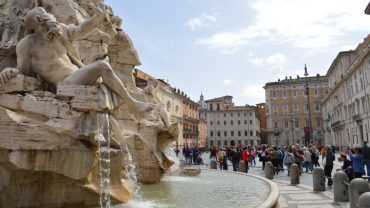
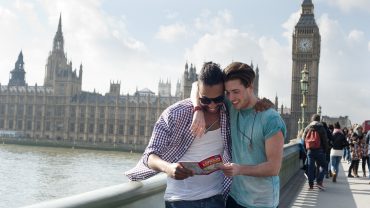
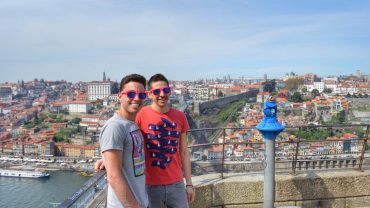
Comment (0)